I've created a simple single view application which is intended to resize/rearrange its layout when the device is rotated to a new orientation. I'm using size classes and AutoLayout.
The layout changes properly in the xcode simulator (ios8 on all tested devices), but when I try to run it on my phone the view appears properly in portrait but does not rotate to landscape.
The status bar(time, signal battery) rotates off the screen but the view does not move at all. What could be causing this? The device is an iphone 5, ios 8.1
I'm happy to post any code you want to see, please let me know what's relevant.
Thank you!
Edit: Ok so I just upgraded xcode to 6.1 from 6.01 and the problem now exists in the simlator and the device so it must be something I've setup wrong in code.
Here is how the app looks in the interface builder preview 
Here is the app in portrait. 
And Landscape. 
As you can see the statusbar rotates but the apps main view does not. My main view is a child view of the banner view to display the iad as demonstrated here in the container banner demonstration.